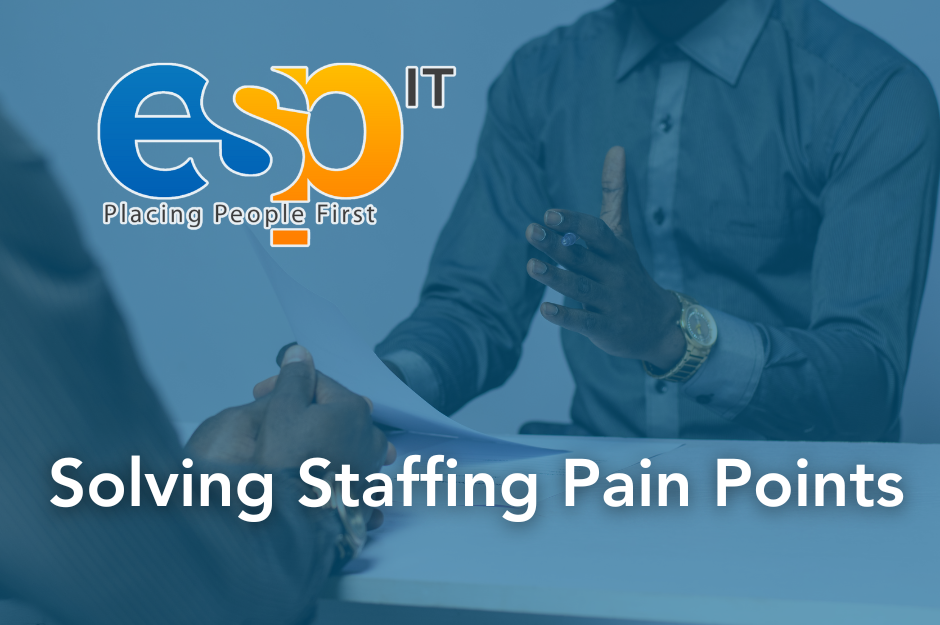As an IT pro, you’re generally the first to acknowledge and appreciate new technologies. But let’s face it – sometimes these technologies seem more complicated than helpful. In the case of virtual resume platforms such as LinkedIn, users sometimes try to simplify things by ignoring details, processes, and steps which they feel are too complicated or unnecessary. But such a mindset when it comes to LinkedIn could cost you your next great IT gig. If the thought of tackling those extras puts you “Under Pressure,” avoid “cracking” the way Queen describes in their hit song by following our tips below.
In the final installment of our three-part LinkedIn Tips series, the ESP IT team will shed some light on why you should be using your “skills” section, and how endorsements and recommendations can bolster your chances of grabbing a recruiter’s attention.
Your Skills Section is as Important as Your Experience Section
Listing skills at the bottom of your LinkedIn page is not an arbitrary matter. Recruiters want you to highlight the skills that you’ve learned working in the various positions included on your profile. These skills also help them as they search through consultant’s profiles to determine whether or not you might be a good fit for an IT contract gig.
“It’s really helpful for IT consultants to list any technologies they’ve used in their skills section. Without that information, it’s not only hard to find them, but it’s hard to know what they are really proficient in.”
- Keep Your Skills Updated
Even if you’re not on the hunt for a new gig, it’s important that you keep your skills up to date so that you can market them in the future.
“If you want to be visible, have a robust and detailed profile. If you haven’t put a lot of effort into your profile, and you’re even passively on the job market, chances are you’re flying under the radar. But even if you aren’t looking for a new gig, you’ll want to keep your skills section updated and accurate so that you can market yourself down the road.”
One tip for those who want to stay updated but aren’t searching for new opportunities is to toggle your activity on or off by turning off your updates. That will allow you to include new skills on your profile when you acquire them, without broadcasting to the LinkedIn community.
- Honesty is the Best Policy
“In addition to simply listing skills and technologies, keeping this information accurate is imperative. It is not helpful to list as a skill a technology that you are less-than proficient in.”
Especially in the IT industry, proficiency with certain technologies could make or break your qualification for a gig. Dishonesty will ultimately end up hurting you, instead of providing more opportunities. Save yourself and your future hiring manager from an awkward interview, where their expectations do not meet your actual qualifications. Simultaneously, including these specific skills and technologies help recruiters find opportunities that are an even stronger fit for you, and are more catered toward your experiences.
Let Recommendations and Endorsements Serve as Virtual References
Your recommendations on your LinkedIn profile help validate your professional claims. Recommendations and Endorsements provide recruiters with a way to assess candidates by giving them an idea of the quality of work consultants have put forth in the past based on feedback from clients or coworkers.
“Having an actual written statement with a picture of someone else’s LinkedIn profile next to it is the most effective way to show recruiters that your work as a consultant is valuable.”
- Consider Your Endorsement Sources
Endorsements are not the same as recommendations, but they still have value. Endorsements show up next to your skills listed when one of your connections “endorses” your use of a certain technology or proficiency of a skill with the click of a button. Because this can be done rather arbitrarily (many users will “click” an endorsement for someone they do not truly know well enough to endorse), it’s important that you consider the types of connections who have endorsed you, and ask valuable connections for their endorsements.
“Though you can’t control who endorses you, endorsements from hiring managers or fellow techs hold much more weight to recruiters than a bunch of endorsements from relatives or sales representatives. It adds value to me if I see that a consultant has an endorsement from someone with the same proficiencies. That tells me I’m on the right path.”
- A Stellar Recommendation is Your Most Impressive Feature
By far, a recommendation is the best addition to your LinkedIn profile. Recommendations allow you to prove that every IT project you have worked on has been a successful one by giving your clients the opportunity to post their experience with you next to every project or employment that you list. This is especially invaluable to consultants who have had more short-term engagements than long-term, as it shows hiring managers that even those brief experiences were valuable.
“If your resume shows a range of short project engagements, backing that experience up with a list of happy customers really helps sell you as a consultant”.
Adding both a narrative in your summary (see our Part 1 Blog in this series) and a recommendation to support your shorter term engagements will have recruiters reaching out to you with great opportunities in no time.
As an IT professional you don’t have to experience “the terror of knowing” how the world is changing with new technologies – you’re already one step ahead of the curve. So don’t let the pressure of virtual resumes “push down on you” or cause you stress. Instead, try on a few of these LinkedIn tips and you’ll be just as proficient at marketing yourself online as you are at your mastered technologies and languages. Check out our “Additional Tips” below and read the previous blogs in this three part series:
Part 1 Blog in this series
LinkedIn Tips: First Impressions
Additional Tips:
- Periodically check your LinkedIn profile to protect against hacks. Anything unprofessional that gets added, even if it’s done ‘lightly’ or as a joke by a friend, will reflect you negatively and could cost you a position.
- Many LinkedIn users will list the college or university that they attended, but will not include their degree. As obvious as this may seem, listing the actual degree is important. Without that clarification, recruiters are likely to assume that you attended college but did not graduate.
- Your activity on LinkedIn can be just as important as what your profile looks like. Does your activity show that you have been proactive as an IT consultant by being involved in networking events? If you are currently working with a large company, find a way to connect with the company by engaging in posts and blogs that the company releases. Show that you’ve been active in your industry by posting relevant IT articles.



